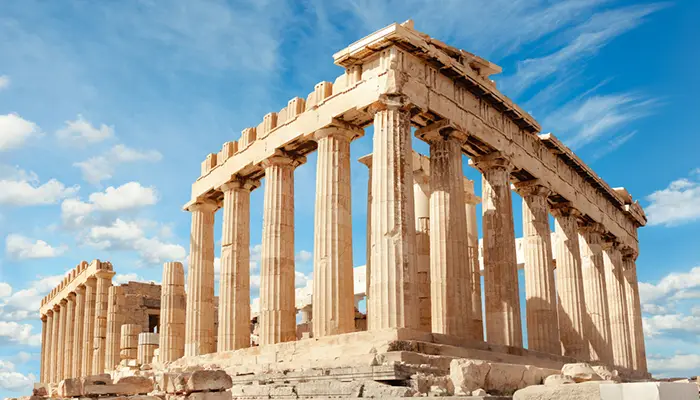Safeguarding Our Legacy – Addressing Threats to Cultural Heritage on International Day for Monuments and Sites
- Admin
- 1 year ago
- 4 minutes read

Cultural heritage is a testament to the ingenuity and resilience of human societies. It encompasses everything from monumental structures and historical sites to oral traditions and ancient manuscripts.
Celebrated annually on April 18, the International Day for Monuments and Sites emphasizes the imperative of protecting these irreplaceable treasures. With the growing complexities of modern threats, from natural disasters to human conflicts, a coordinated global effort is essential to preserve the rich tapestry of our past. Let’s delve into the multifaceted threats to our cultural heritage and explore both current and innovative strategies to protect our collective historical narrative.
The Spectrum of Cultural Heritage
Cultural heritage is more than just physical structures; it includes the total of a society's historical footprint, encompassing arts, customs, practices, places, objects, and values. This heritage gives communities their unique character and provides individuals with a link to traditions that transcend generations. For instance, the intricate rituals of Japanese tea ceremonies or the architectural splendour of the Gothic cathedrals in Europe each tell stories of cultural identity and continuity. Protecting these elements ensures future generations have access to their ancestral past, enhancing cultural diversity amid increasing globalization.
Perils Facing Cultural Heritage
Natural Disasters
Natural events like earthquakes, tsunamis, and hurricanes pose catastrophic risks to fragile historical sites. For example, the 2009 earthquake in L'Aquila, Italy, devastated many historic churches and buildings, leading to significant cultural loss.
Human Activities
Urbanization, pollution, neglect, and vandalism directly impact the integrity of cultural sites. The rapid urban expansion in many parts of Asia has seen ancient sites bulldozed for new developments.
Conflict and Terrorism
Armed conflicts and terrorism have become prominent destroyers of cultural heritage. The destruction of the Al-Nuri Mosque in Mosul, Iraq, and the damage to the old city of Aleppo in Syria are poignant reminders of heritage lost to war.
Climate Change
The effects of climate change, including sea-level rise and increased acidity, threaten coastal and underwater heritage sites. The rising waters threaten to submerge the historic city of Venice and its associated lagoon, both UNESCO World Heritage sites.
International Efforts to Safeguard Heritage
Organizations like UNESCO with its World Heritage Convention play pivotal roles in the international preservation landscape, facilitating emergency responses and funding restoration projects. Nations are urged to ratify protective laws that deter looting, manage tourism sustainably, and implement disaster risk management strategies for heritage sites. International cooperation fosters shared responsibility and resource pooling, crucial for large-scale conservation projects.
Innovative Preservation Techniques
Technology
Cutting-edge technology such as LiDAR (Light Detection and Ranging), 3D imaging, and drone surveillance offers new ways to document, monitor, and manage heritage sites more effectively.
Community Involvement
Engaging local communities in the preservation process ensures that efforts are culturally relevant and more sustainable. This includes training locals in conservation skills and involving them in managing tourism.
Education and Public Awareness
Educational initiatives that include heritage in school curricula and public campaigns raise awareness about the value of heritage and the need for its preservation. These efforts cultivate a sense of pride and stewardship within communities.
Exemplary Models of Successful Conservation
Angkor Wat, Cambodia: Through international collaboration, Angkor Wat has undergone extensive restoration that respects both its historical significance and its role in local culture.
The Acropolis, Greece: Sustained conservation efforts, supported by rigorous scientific research, have helped preserve the Acropolis for future generations, showcasing a model of heritage management that balances preservation with public access.

The International Day for Monuments and Sites serves as a critical reminder of the ongoing efforts required to preserve our cultural heritage. By confronting the threats with innovative solutions and sustained global cooperation, we can ensure that our historical legacies are not forgotten but instead celebrated and preserved. Protecting our cultural heritage is ultimately an investment in our collective future, ensuring that the wealth of human history remains vibrant and accessible for generations to come.












